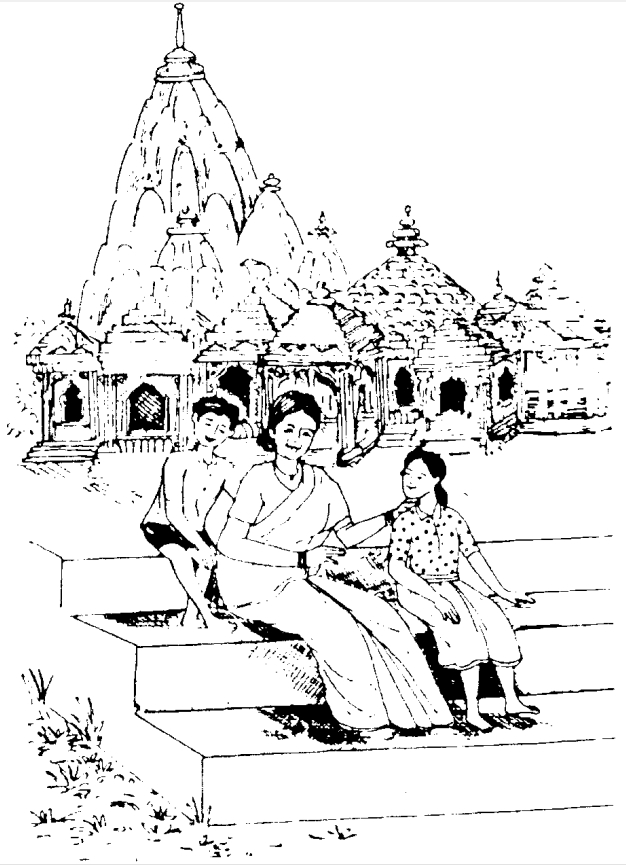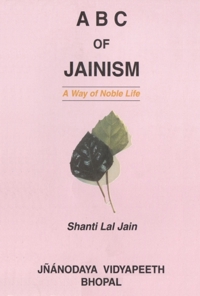LESSON 1
Ṇamokāra Mantra
ṆAMO ARIHANTĀṆAM,
ṆAMO SIDDHĀṆAM,
ṆAMO ĀVARIVĀṆAM,
ṆAMO UVAJJHĀYĀṆAM,
ṆAMO LOE SAVVA SĀHŪṆAM.

Daughter | Ma, we recite the Ṇamokāra-Mantra daily; what is Namokāra-Mantra? Please tell us. |
Mother | ṆAMOKĀRA-MANTRA is a prayer of virtues. We Jainas worship Arihanta, Siddha, Ācārya, Upādhyaya and Sadhu, by reciting Ṇamokāra-Mantra. They are known as " PAÑCA PARAMESTHI". Actually Ṇamokāra-Mantra is a reverence Mantra. |
Daughter | Ma, what do we gain by reverence to Pañca-Paramesthī? |
Mother | Jainas worship good qualities of a person and not only the person. So, this reverence (deep respect) is impersonal. It is focused on their virtues (good qualities). Indeed, it is a reverence of their virtues. It is reverence for their virtues. We wish to instill the virtues of the PAÑCA-PARMESTHĪ in our lives. Ṇamokāra-Mantra reminds us to achieve this goal. |
Daughter | Who are Arihantas? |
Mother | Arihantas are supreme human beings. They preach the absolute truth. They know every thing about the universe. At the end of their lives, they become pure-souls (Siddhas). |
Daughter | Who are Siddhas? |
Mother | Siddhas are pure souls without a physical body. They have freed themselves from all kinds of bondage. |
Daughter | Ma, why do we pay our reverence first to Arihantas in Ṇamokāra-Mantras? |
Mother | Although, Siddhas are spiritually higher than Arihantas, we pray Arihantas first because they preach us the path of Bliss. |
Daughter | Who is an Ācārya? |
Mother | An Ācāryais the leader of the monks (SADHŪS). He himself strictly practices the teachings of the religion and make other monks to follow such practices. He is a propagator of ethico-spiritual values. |
Daughter | Who is an Upādhyaya? |
Mother | An Upādhyaya is the reader of holy scriptures. He himself learns and teaches other monks. He is a teacher of ethicospiritual values. |
Daughter | Who is a sādhu? |
Mother | A Sādhu is completely possessionless naked monk. He is indifferent to worldly pleasures and passions. He follows the path of spiritual progress. His daily routine consists of study of scriptures and meditation. He is a pious personality. |
Daughter | What is the difference amongst Ācāryas, Upādhyayas and Sādhūs? |
Mother | Ācāryas, Upādhyayas and Sādhūs are all monks. All of them study and practice the teachings of religion. The basic difference amongst them is that the Ācārya is the head monk of the group of monks. A monk who has highest degree of scriptural knowledge is appointed as an Upādhyaya. A Sadhu is a monk who practices the religion under the guidance of Ācārya. Dear child, Ṇamokāra Mantra is a unique prayer. Pañca-Parmesthī are the ideals for us to follow. By reciting Ṇamokāra Mantra (9 or 108 times), we gain peace, harmony and purity of thoughts. In Jainism, the Pañca-Parmesthī are represented by the symbol OM (ॐ) or AAAUM. It is an acronym formed from the Sanskrit words Arihanta, Asariri (Siddhas who do not have material bodies), Ācharya, Upādhyaya and Munī (Sādhu). |

 Shanti Lal Jain
Shanti Lal Jain
